

Volume 141
Published on April 2025Volume title: Proceedings of the 3rd International Conference on Mechatronics and Smart Systems
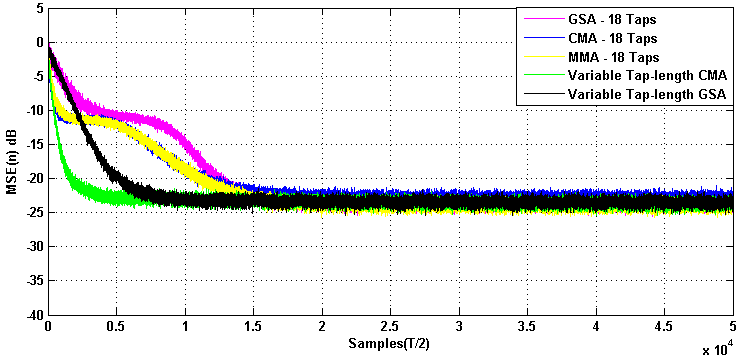
InterSymbol interference (ISI) distortion can be rectified without training sequence using blind equalization schemes. However, such a capability of the equalization methodology comes at the expense of high cost, and therefore it is necessary for the designers to think about efficient schemes to accomplish the blind equalization process. In this work, using a variable tap-length strategy, two algorithms for equalizing quadrature amplitude modulation (QAM) signals are proposed and tested. generalized Sato algorithm (GSA) and constant modulus algorithm (CMA) are incorporated with a variable tap-length technique to update the filter's coefficients and length. The variable tap-length method utilizes a fractional filter length in every iteration to optimize the filter coefficients and structure. Simulations are conducted in a microwave channel for 16-QAM, and the results have shown a considerable improvement in both mean square error (MSE) characteristics of the suggested algorithms as well as the ability of the presented algorithms to estimate the filter’s optimal length.

 View pdf
View pdf


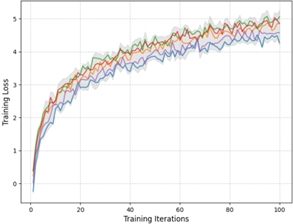
The demand for storage and computing of massive amounts of industrial IoT data has led to increasing concerns about data privacy and security in multi-cloud environments. While federated learning enables collaborative model training without sharing raw data, existing solutions lack comprehensive privacy protection mechanisms suitable for industrial scenarios. This paper proposes a privacy-preserving federated learning framework specifically designed for industrial IoT data analysis across multiple clouds. The framework incorporates a novel differential privacy mechanism with adaptive noise injection to protect local model updates, while a Byzantine-resilient secure aggregation protocol ensures reliable model convergence under malicious attacks. A distributed key management system enables secure cross-cloud communication without centralized trust. Extensive experiments on real industrial datasets across three major cloud platforms demonstrate the effectiveness of our approach. The proposed method achieves 93.5% model accuracy while maintaining strong privacy guarantees, showing 15% improvement in privacy protection and 30% reduction in communication overhead compared to existing solutions. The system supports efficient scaling across multiple cloud providers while ensuring consistent privacy protection. The evaluation results confirm that our framework provides a practical solution for privacy-preserving industrial data analysis in multi-cloud environments.

 View pdf
View pdf


This paper investigates the control of DC-DC converter with the help of Active Disturbance Rejection Control (ADRC). The DC-DC converter is an important power electronic equipment used for voltage regulation, but its performance is often influenced by external disturbances. Traditional control approaches, such as PID, are inadequate in handling such disturbances in real-time. To address this challenge, an ADRC-based control approach is applied. The ADRC control approach, particularly through the use of Extended State Observer (ESO), is configured to address and reject disturbances, ensuring accurate output voltage control. In this paper, DC-DC buck converter and boost converter are both applied with ADRC control approach, to analyze the more general situation.

 View pdf
View pdf


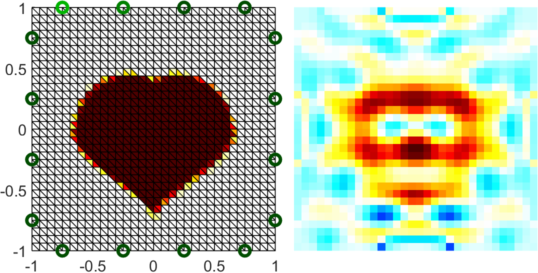
With the continuous development of electronic technology, the frontier research on semiconductor materials with excellent properties has become a significant direction in the field of condensed matter physics. Among them, the third-generation semiconductor material GaN is an ideal semiconductor material. However, there are still issues with the detection methods for some of its physical and chemical properties. At the same time, Electrical Impedance Tomography (EIT) technology, as a mature medical technique, can quickly obtain electrical impedance tomography results and may exhibit excellent performance in detecting certain properties of GaN materials. Accordingly, this paper starts from the detection of the photoconductive effect and introduces medical EIT technology into the simulation imaging of GaN photoconductivity. The principle of this simulation method is elaborated, and the three selected algorithms are deeply analyzed. The simulation results are analyzed and compared in terms of errors. The advantages and existing problems of this method are summarized, and future prospects are discussed.

 View pdf
View pdf


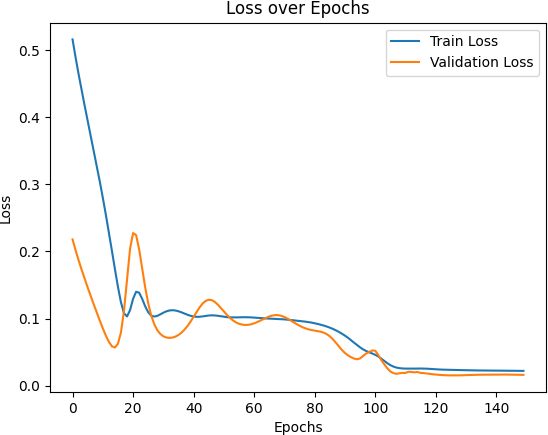
With the intensification of global climate change and energy crises, wind energy, as a clean and renewable energy source, has gradually become a crucial component in the energy sector. However, the intermittent and unstable nature of wind power generation poses significant challenges to accurately predicting the power output of wind turbines. This study proposes a wind power prediction model combining Long Short-Term Memory (LSTM) networks and Self-Attention mechanisms. LSTM net- works effectively capture long-term dependencies in time series through their gat- ing mechanisms, while the Self-Attention mechanism dynamically adjusts attention to critical time steps, further enhancing prediction accuracy. Experimental validation on real-world wind power datasets demonstrates that the LSTM + Attention model outperforms traditional RNN and LSTM models in terms of training loss, validation loss, and prediction accuracy, particularly in reducing prediction errors and improving accuracy. The results indicate that the LSTM model integrated with Self-Attention ef- fectively addresses complex nonlinear features in wind power prediction, enhancing both generalization capability and prediction precision. This model provides an ef- fective solution for wind power prediction and holds significant application value for optimizing grid dispatch and management, as well as improving the competitiveness of wind energy in the energy market.

 View pdf
View pdf


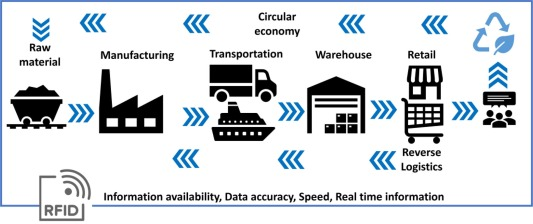
With the rise of the Internet of Things, the application market of Radio Frequency Identification (RFID) technology has further expanded and has enormous development prospects. This article mainly introduces the main components and working principles of RFID technology, classifies RFID tag antennas according to different frequency bands, and provides typical large-scale application cases combined with different RFID systems. Analyzed the advantages of RFID compared to original tags, briefly described the technical problems encountered in the development of RFID technology, and discussed the directions for further research on the difficulties currently encountered, as well as the future development prospects and directions of RFID. This article studies the principles of RFID technology and summarizes its characteristics, thus identifying the reasons for its broad development prospects. Finally, it can be inferred that if the characteristics of RFID technology are cleverly combined with the current development of the Internet of Things, the current technological development can be further optimized.

 View pdf
View pdf


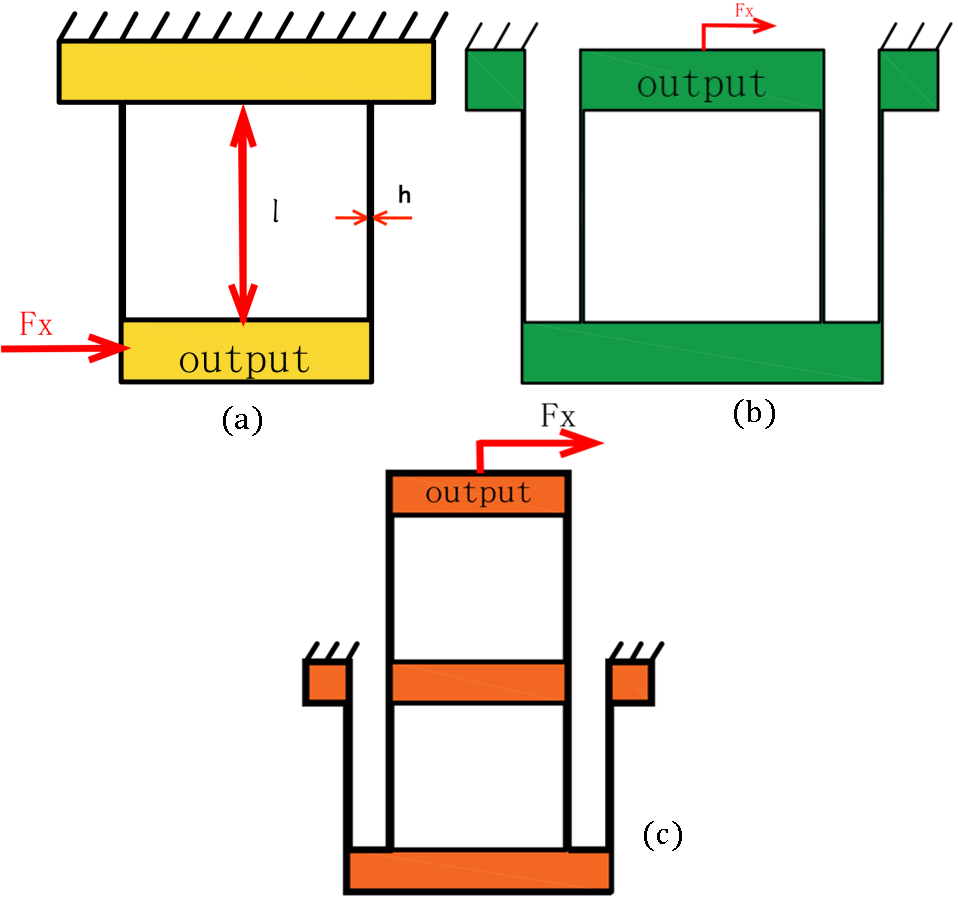
Due to the low stiffness and loose structure of some previously studied large-stroke XY positioning stages, this paper presents the design of a novel XY micropositioning stage based on a leaf-shaped flexible parallel mechanism. By modularizing the parallel mechanism and combining individual modules, a compact XY flexible stage with mixed series and parallel kinematics is developed. The stage is driven by a voice coil motor to decouple the input and output directions. In the mechanism design, the mechanical characteristics of single parallel, double parallel, and hybrid series mechanisms are studied in detail. A symmetrical layout is adopted to combine these mechanisms according to their individual characteristics, resulting in the novel flexible stage. Theoretical calculations and finite element simulation (FEA) analysis are performed to evaluate the stage's overall characteristics, including its range of motion, stiffness, and natural frequency. The stage can be accurately positioned within a working space of 15.4 mm × 15.4 mm and exhibits a high natural frequency.

 View pdf
View pdf


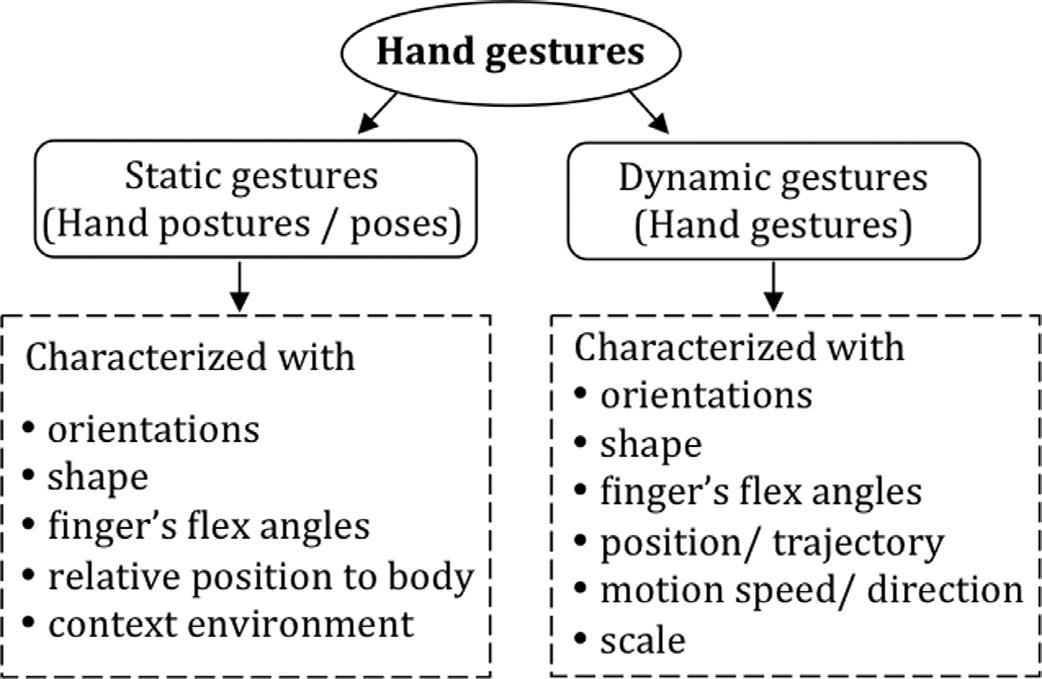
Human-computer interaction has a wide range of application prospects in many fields such as medicine, entertainment, industry and education. Gesture recognition is one of the most important technologies for gesture interaction between humans and robots, and visual gesture recognition increases the user's comfort and freedom compared with data glove recognition. This paper summarizes the general process of visual gesture recognition based on the literature, including three steps: pre-processing, feature extraction, and gesture classification. It also defines static and dynamic gestures and makes a comparison between their differences and recognition emphases. Based on static and dynamic gesture recognition, this paper summarizes the commonly - used visual gesture recognition methods. For static gesture recognition, it includes methods such as the template - matching method and the AdaBoost - based method. As for dynamic gesture recognition, it encompasses methods like the hidden Markov model method and the dynamic time regularization method. Finally, some applications of visual gesture recognition are introduced, for example, a non-contact system for operating rooms and smart home control.

 View pdf
View pdf


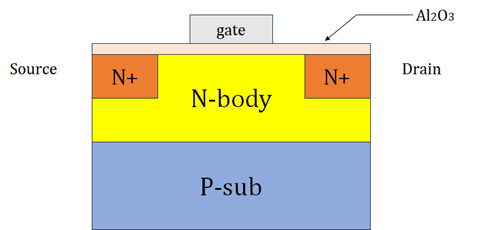
Beta-phase gallium oxide (β-Ga2O₃), as an ultra-wide bandgap semiconductor (4.5–4.9 eV), demonstrates superior critical breakdown field strength (8 MV/cm) compared to SiC and GaN material systems, showing significant potential for next-generation high-power electronics. Nevertheless, inherent limitations including the absence of stable p-type doping leading to depletion-mode operation and low thermal conductivity (~27 W/m·K) causing severe self-heating effects hinder practical applications. This study establishes a multi-physics coupled simulation platform using Sentaurus TCAD to systematically investigate the steady-state electrical characteristics and thermal reliability of β-Ga2O₃ MOSFETs. A self-consistent electrothermal model reveals a threshold voltage of -3.5 V and breakdown voltage of 100 V at 300 K. Thermal stability analysis demonstrates that elevated temperature (600 K) increases leakage current by two orders of magnitude due to thermally excited carrier accumulation, accompanied by a 0.8 V negative shift in threshold voltage. Defect density gradient simulations further uncover that bulk trap concentrations exceeding 1×10¹⁷ cm-3 under off-state conditions induce significant recombination in space charge regions, triggering anomalous conduction phenomena. This work provides theoretical guidance for overcoming thermal management challenges and enhancing reliability in Ga2O3-based devices.

 View pdf
View pdf


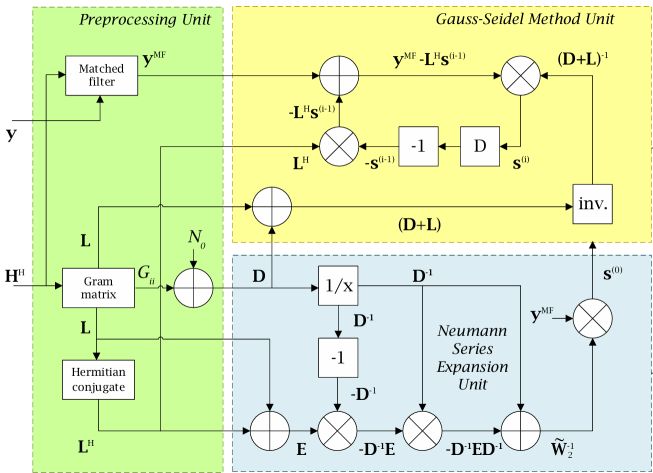
Large-scale Multiple-Input Multiple-Output (MIMO) systems are crucial for improving both the spectral efficiency and reliability of communication links. Additionally, they contribute to reducing the power consumption of base stations (BS), which is a significant concern in modern wireless networks. In this context, data detection plays an essential role, particularly in the uplink of large-scale MIMO systems. However, one of the major challenges lies in the substantial increase in computational complexity required for base stations to process the data efficiently in such systems. The conventional optimal detection techniques, such as ML detection, SD detection, MMSE detection, and ZF detection, are widely employed in MIMO systems. While these methods offer optimal performance in terms of detection accuracy, they suffer from extremely high computational demands, which can be impractical for real-time implementation in large-scale networks. Under the premise of approaching the performance of the optimal calculation methods, this paper analyzes three new algorithms with lower computational complexity, including iterative algorithms, matrix approximation algorithms, and K-Best algorithms. This paper conducts a detailed study on the advantages and disadvantages of the calculation methods and circuit structures of these algorithms.

 View pdf
View pdf




